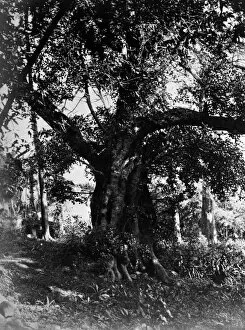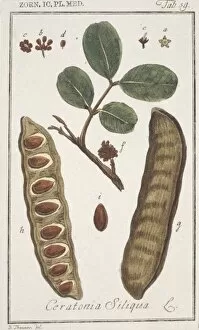Carob Tree Collection
The carob tree, scientifically known as Ceratonia siliqua, is a fascinating plant that has captured the attention of botanists and artists alike
All Professionally Made to Order for Quick Shipping
The carob tree, scientifically known as Ceratonia siliqua, is a fascinating plant that has captured the attention of botanists and artists alike. This handcoloured stipple engraving by Mixelle l aine after an illustration by Pierre-Joseph Redoute from Henri Louis Duhamel du Moncels Treat des Arbres et Shrustes showcases the beauty of this remarkable tree. Native to the Mediterranean region, the it is commonly referred to as the locust bean due to its long pods resembling those of a locust. These pods have been used for centuries in various commercial applications, earning it another name - St John's bread. In this coloured engraving from 1833-39, we can see a snail making its way across the branches of the carob tree. It highlights how these trees serve as habitats for numerous creatures in their ecosystem. The pod and beans depicted in another illustration demonstrate one of nature's wonders – inside each pod lies several seeds that are often ground into flour or used as animal feed. The versatility and nutritional value of these beans make them highly sought after. This botanical illustration captures the essence of Ceratonia siliqua beautifully; showcasing its intricate leaves and distinctive shape. As part of the Fabaceae family, it shares characteristics with other leguminous plants such as peas and lentils. Another enchanting depiction shows seed pods hanging from branches against a backdrop of lush foliage. This image emphasizes not only their aesthetic appeal but also their significance within nature's cycle. Known simply as "carob, " this species has found its place on Tenerife Island where it thrives amidst stunning landscapes according to an image dating back to 1873.










